ReExploring with Vasco da Gama
Our train to Cochin had been scheduled to arrive at 7:30 am. But in what seemed to us a completely uncharacteristic maneuver for the Indian Railway, it arrived nearly 45 minutes ahead of time, meaning that we were quietly snoozing in our bunks when the rest of the passengers detrained and wandered into the misty morning. It was the mechanic who finally came to wake us up, no doubt curious what had become of us (and his tip), what with the train completely empty and the bikes still locked near the rear lavatories.
We did our best to rouse ourselves and unload our luggage with all haste. I tipped the mechanic, and with all our worldly possessions thrown in one great pile on paan, spotted the hissing railway platform at Ernakulam, We began to take stock and form our strategy. It was just before sunrise, and the train station was a ghost town. As you no doubt already know, dear reader, Cochin is an island-like peninsula, whose sister city, Ernakulam, is separated from Cochin by a thin body of water, which we needed to traverse in order to arrive at our hotel.
The hotel, was a place by the name of Vasco Homestay, which Scott had booked last night on the train, named thus for the principle reason that it happens to cohabit the house in which the famous barbarian and Portuguese colonial explorer, Vasco de Gama, died.
 It was for this very reason that we were attracted to the place, and, if you might indulge me dear reader, I would like to briefly diverge to the story of Vasco da Gama and how he came to die in Cochin.
It was for this very reason that we were attracted to the place, and, if you might indulge me dear reader, I would like to briefly diverge to the story of Vasco da Gama and how he came to die in Cochin.
Vasco was originally the son of a knight and governor back in Portugal and as such was trained to be a mariner. This was during a time of much speculation as to the existence of a oceanic trade routes around the tip of Africa and over to the Indian ocean. Vasco proved himself to be a ruthlessly effective commander, fighting with French privateers off the African gold coast, and when his father was given the task of proving or disproving the rumored trade route, Vasco lobbied for the job.
As luck would have it, he got it, and set off in 1497 with four ships and 170 men. They set forth working their way down the coast of Africa, seeking a wind pattern known as the South African westerlies, and when he finally caught them he was able to make his way around the southern Horn of Africa into waters which had hitherto been unexplored by Europeans. On his way through, since it was around Christmas, he named the coast of south Africa “Natal” which means Nativity. The name stuck, more or less, as that part of south Africa is currently called KwaZulu-Natal. Nice one Vasco.
In hopes of building good favor among the people of the Arab-controlled east coast of Africa, Vasco assembled a party of men, put them in costume, and face paint designed to impersonate that of Muslim traders, and in this getup, managed to book an audience with the Sultan of Mozambique. Unfortunately, the Sultan was unimpressed with Vasco’s unglamorous gifts, and the locals proved none too fond of black-face, eventually sending Vasco and his men running for their ship, pursued by a hostile mob. Vasco fled the port, firing his cannons into the city in frustration.
 With the failure in Mozambique, poor morale began to reign on board. Vasco addressed this by beginning a policy of attacking and looting unarmed Arab trading ships. This improved morale significantly, while continuing to erode his reputation with the Arab traders, who denied him entry to the port of Mombasa. This proved to his advantage, however, when he arrived a little later at a port called Malindi, in modern day Kenya, a city that was in conflict with traders from Mombosa. The fellows in Malindi provided Vasco an expert pilot, whose knowledge of sailing in monsoon winds allowed him to cross the rest of the way to India in only 28 days.
With the failure in Mozambique, poor morale began to reign on board. Vasco addressed this by beginning a policy of attacking and looting unarmed Arab trading ships. This improved morale significantly, while continuing to erode his reputation with the Arab traders, who denied him entry to the port of Mombasa. This proved to his advantage, however, when he arrived a little later at a port called Malindi, in modern day Kenya, a city that was in conflict with traders from Mombosa. The fellows in Malindi provided Vasco an expert pilot, whose knowledge of sailing in monsoon winds allowed him to cross the rest of the way to India in only 28 days.
Vasco landed first in a largish city called Calicut, Kerela, where things refused to go his way. The local authorities had close ties with Arab traders, who in turn were not fans of Mr. da Gama. Likely through a combination of assault and battery, Vasco was able to get an ambiguous letter referring to reservation of trading rights, but when the locals requested that he leave some goods behind as collateral, he became frustrated and left without any goodbyes, leaving a detachment of men behind, but taking all his trade goods with him. The men were told to build a trading post. Tough assignment.
Vasco set sail back to Portugal in August 1498, this time sailing against the monsoon winds. Consequently, the journey back across the Indian Ocean took about five times longer than first trip. So long, in fact, that half the crew died on this leg, and the rest were extra-scurvy by the time they reached Malindi. All in all, only one of the four ships and less than a third of the men made it back to Portugal. Vasco also brought no trade goods back with him. Sounds like a total failure, right?
Wrong. Vasco was met back in Portugal with a hero’s welcome, and showered with riches. He was given the title, “Admiral of the Indian Seas,” and awarded a lordship, giving noble status to him and all his offspring forever more. So at the beginning of 1502, Vasco came to the royal family in Portugal to pitch a return mission, this time with a request for 20 warships, and all the fiery rhetoric of a good revenge flick. The king gave the mission his blessing, and Vasco was off. With all that fire-power, the urge to pillage and privateer was too great, and plenty occurred along the way. When he finally reached India, Vasco found that the detachment of men he had tasked with establishing a trading post in Calicut had been put to death shortly after his departure. Ouch. So he bombarded Calicut quite savagely, leveling much of the city, and split for the more southerly city of Cochin, a smaller place, more of a fishing village really, where word had spread of his destruction of Calicut, ensuring that he receive a warm welcome.
He traded a mixture of European goods (assault and battery) for some gold, spices and silk, and headed back to Portugal, leaving more men to begin to build a more intense Portuguese settlement in Cochin. On the way back he took a detour to hunt ships traveling to and from Mecca, laden with goods, and a fair number of famous and well-to-do Arab merchants. He would capture these ships, steal all they had, then lock all aboard below decks and order the ship burned. This kind of behavior proved quite effective in lubricating a treaty with the greater government of Kerala, ensuring the success of his trading colony.
As he sailed back, he engaged in plenty and even more heinous profiteering against Arab trading ships and demanding tribute from cities along the way, demanding signed letters from local leaders, agreeing to favorable trading relationships with cities along the coast of Africa. It is no surprise that he returned home to an even more intense hero’s welcome. He was showered with more riches, made an earl, and carried with him now a quite fearsome and Mr. Wolf-esque reputation as a “fixer.”
He returned back to India once and for all to take up his position as Viceroy over all local Portuguese possessions in the region. When he arrived he promptly died of malaria in his house in Cochin. And we had every intention of arriving at that very same place.
Meanwhile, in 2010, Scott and I were pedaling the Speed TRs, fully loaded down with baggage through the gray and still sleeping streets of Ernakulam, toward the ferry terminal. We found our way there quite easily, and finding that the tickets were approximately four cents per person, plus another two cents per cycle, decided to board the rickety craft. We were, by this point, profusely sweating, badly in need of coffee, and nearing the edge of madness.  Luckily, scurvy had not yet set in.
Once we had unloaded our bikes from the boat, we were able to seek counsel from some local fishermen, who were erecting their stalls in the local market place, as to the location of the Vasco Homestay.

And, thanks be to God, we soon we found ourselves wheeling up to the now quite humble and charmingly crumbling ex-residence of Mr. da Gama himself.
The owner, a charming and quite helpful fellow by the name of Santosh, showed us to our chambers. They were gigantic, and packed to the gills with curios and old furniture. We could just imagine the savage barbarian himself, stupendously fat, covered in a cold sweat and very near death, propped up with pillows in one of these very beds, in the act of dictating his final wishes, the joints of his hands cracking too painfully with gout to write himself, pausing for some time between each word, calling out weakly for water, and forcing himself out of the swimming delirium of fever to do this one last task. The extremes of experience indeed.
We threw down our baggage and attempted to breakfast at the restaurant connected with the Vasco Homestay, but found that the richness of the place seemingly ended before the coffee pot, so we unfolded the speed TRs and headed out into the city. We were stopped shortly into the ride by a fisherman who explained to us that he had a terrible disease, the only cure for which was a ride, just a short one, around the square on the Speed TR. We indulged him, and he thanked us with the recommendation of good breakfast place.
The place proved so delicious that we would end up eating there for the majority of our remaining 12 meals in Cochin. It was a very unassuming South Indian coffee shop, run by a tall smiling man in a lungi with the voice of James Earl Jones, and a way with dosas, vadas, and coconut chutney that would make a grown man weep. He also expertly whipped up South Indian coffee served in the traditional two containers, one tall and thin and one short and fat. The coffee could them be poured between the two to attain the desired temperature and surface area to volume ratio. Brilliant.

Much refreshed, we climbed back on the cycles and wheeled into what they call Jew Town. A Jewish part of the city, one of the very few places in India where you might see Hebrew, directed at other than Israeli tourists. To be frank, the presence of a Jewish community at all was quite odd for India.
Christianity, though still a minority, has quite a presence in Cochin due to the Portuguese influence. Cochin was certainly the most Christian town we had visited since we left the American Southwest. In fact, we saw quite a few people sporting a cross on their heads, drawn between the eyes with bright colored powder, in much the same way we have seen Hindu Indians wearing a colored dot between the eyes. A fascinated meld of religious practices.
We then wheeled south and found ourselves on the busy main road, which took us across a bridge and into Ernakulam. At the entrance to Ernakulam we found a giant repository of cut wood, each piece bearing unique markings.
Any speculation as to the details of this system is welcome in the comments.
Ernakulam proved busy and boisterous, jam packed with all manner of motorized vehicles, all honking and revving their way around one another. By this point in the trip, though, we were becoming quite at home amidst the chaos. We were learning the vocabulary and the rhetoric of the road, giving way and taking way, signaling our intent, and ringing our bells relentlessly.
We called a waypoint at a Vodaphone shop, where I was to get a SIM card. We locked the bikes and I went inside while Scott was to take a stroll. The Vodaphone people we extremely friendly, and a fellow there by the name of Vinil helped me to gain and activate my SIM despite some complicated rules that would otherwise have necessitated a stay in Cochin of at minimum one week.
We were just getting to the final steps of the deal-making process when a security guard came in breathless, and informing me that our cycles were locked in an illegal spot. I came outside to find that Scott, lacking the key to unlock the cycles, had undone the latches and begun to actually fold the Speed TRs in such a way as to allow entry to the parking space that we had blocked, effectively wrapping the bikes around a railing, still leaving the rear wheels locked to a nearby pole.
This acrobatic, of course, attracted a large crowd, and he was now handling inquiries from a diversity of personnel — from passers by, to Vodaphone security, to the Vodaphone manager who had just managed to squeeze his car into its spot. All was made well, and a fair bit of head wobbling later, we were back on the road.

We ate lunch at a kind of point-and-eat restaurant that served food on large square trays, something like what one might find in a middle school cafeteria.

We spent the rest of the afternoon wheeling our way up and around Ernakulam, past the port and a sprawling but perpetually closed city park.
Back in Cochin, we retired to our chambers at the Vasco Homestay, giving our best regards to the owner, and settling in for a bit of well deserved relaxing.
Flipping through the newspaper and finding a particularly curious listing of commodity rates, we marveled at how trade had tamed since the days of the gruesome Vasco da Gama. Â Settling down for the evening, we slumbered under the very roof in which he shuffled off this mortal coil.















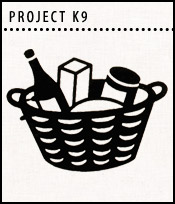
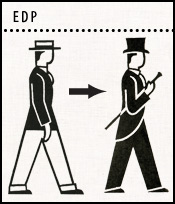

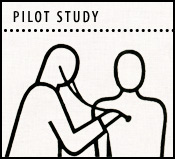
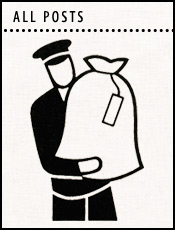
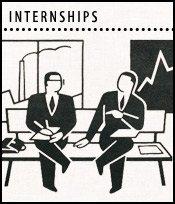




Comments
okay for the ‘celebration of time’ i have to be vasco da gama and give a short speech and dress up as him, witch wont be the easyist thing to do and most of my inspiration for my speech was from this site
thanks,
jakie bercoits
I was just looking up a picture of vasco da gama to see if he has a fro and apperantly he has a little so thjis will be great! tyhnx guys (photographrs of da gama…) :)!
Like i have t dress up as him for a report my report is 4 pages long ! yah I am an author!… so thnx this site it helped me tons!
wow i like it..